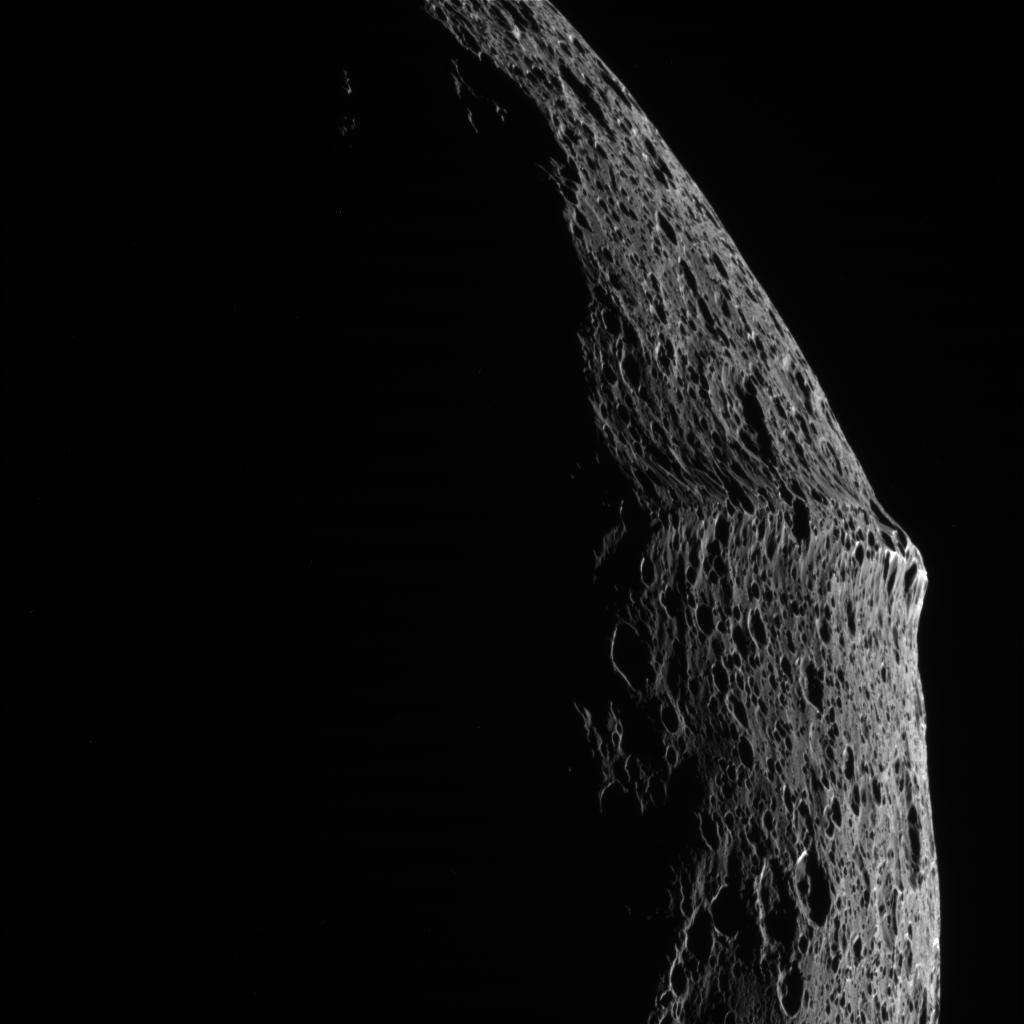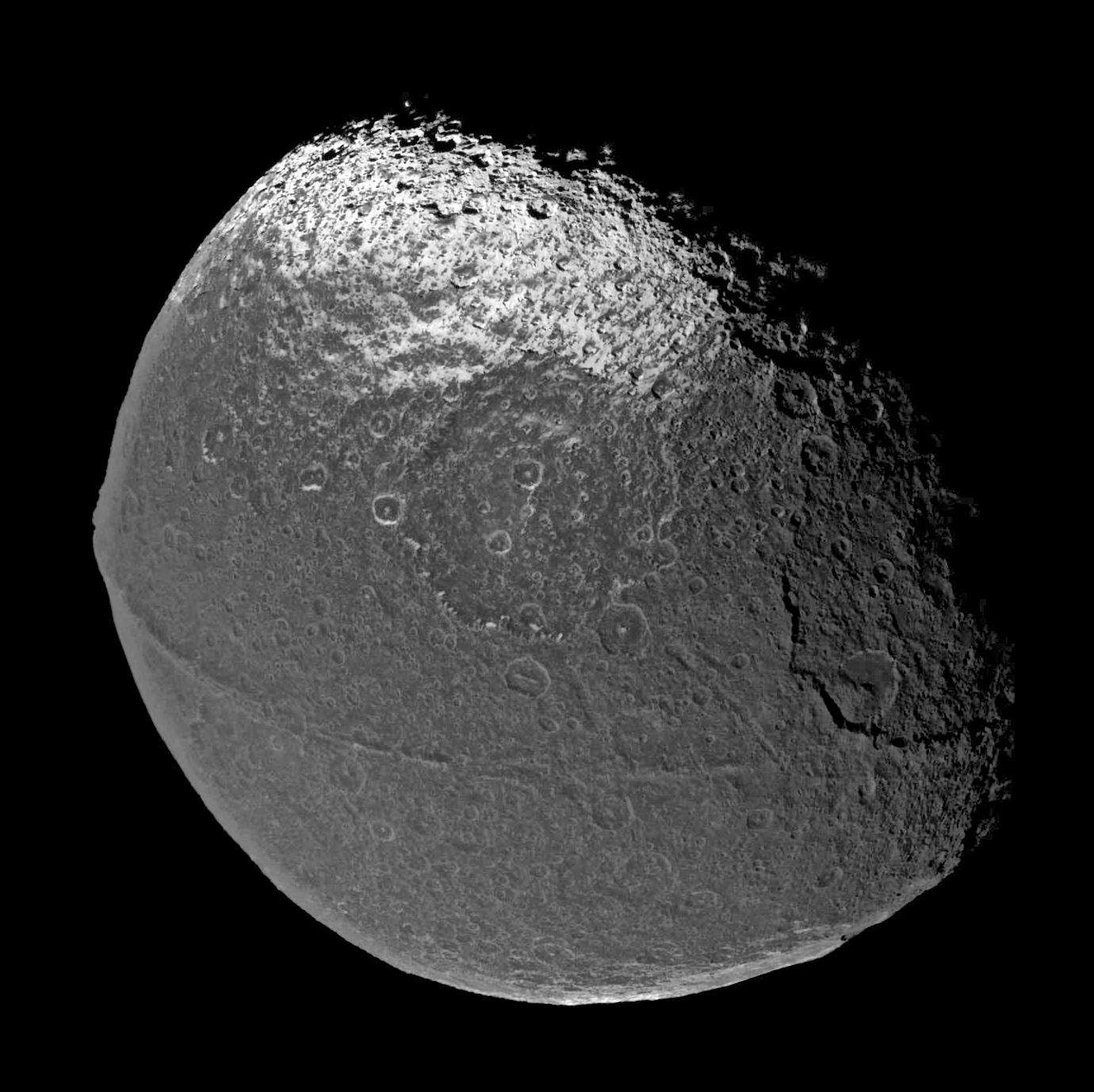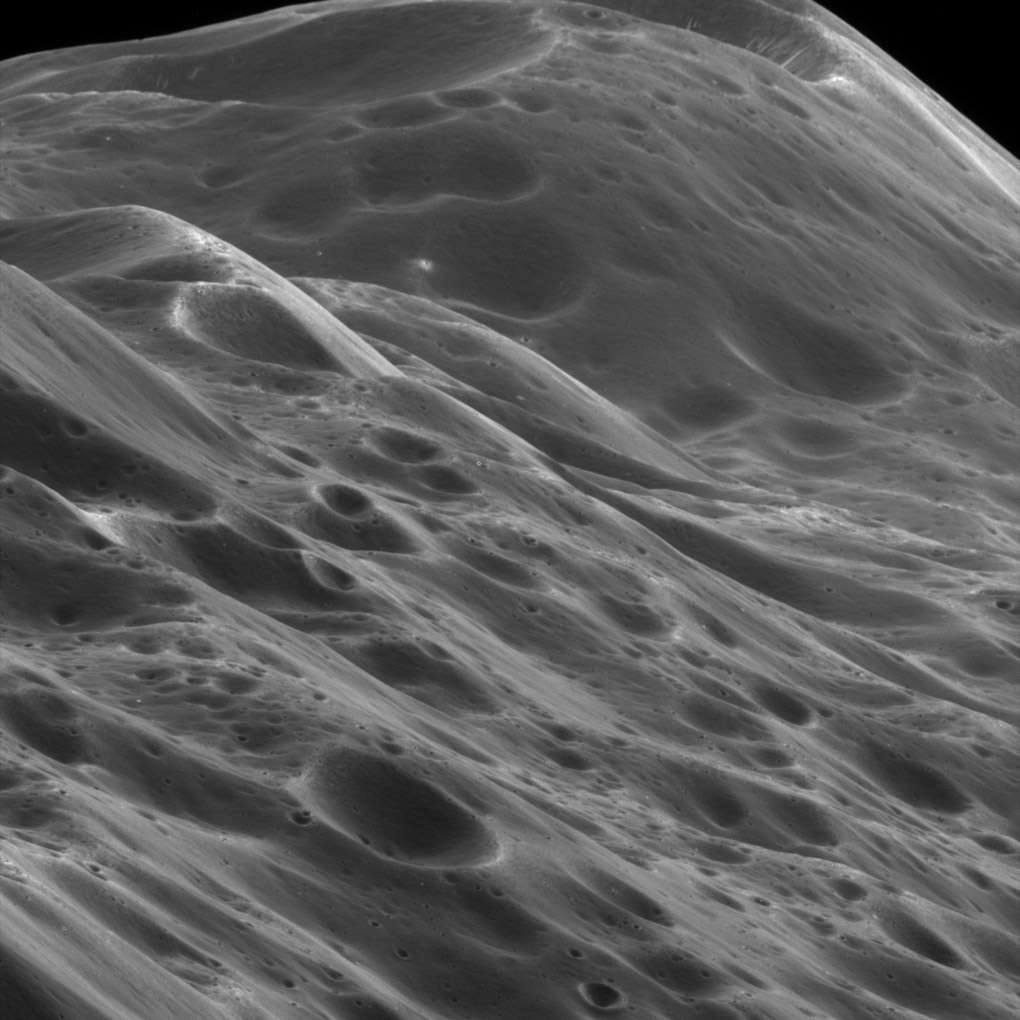Create a free profile to get unlimited access to exclusive videos, sweepstakes, and more!
Did a giant impact and a crashing submoon form the bizarre ridge around Iapetus?

Of all the weird things we've seen in our solar system — and it's a long list — I think near the top would be the bizarre and very large ridge of mountains stretching all the way around Saturn's moon Iapetus.
And I do mean bizarre. It wraps around the moon's equator, is nearly continuous, and is punctuated by individual peaks some of which are 20 kilometers high! That's over twice as tall as Mt. Everest. And it's wide, too, in some places about 200 kilometers across. Images of the ridge from the Cassini spacecraft make one thing very clear: Iapetus is a space walnut.
Mind you, Iapetus is only about 1,470 kilometers across, less than half the size of our own Moon. What could cause such a freaky, immense structure?
Ideas abound. One is that the moon rotated rapidly after it formed, and as it solidified it shrank, causing a buildup of material at the equator. Another is that a ring of debris around Saturn as it was forming fed into a ring around Iapetus as the moon itself was forming, and that collapsed onto the moon.
A paper has come out adding to this idea: Not long after Iapetus formed it was hit by a very large asteroid or small moon. This blasted material into space that coalesced into a moon close to Iapetus. Over time it got closer, broke apart, formed a ring, and then that material rained down onto the surface, building up the ridge.
Wow. It sounds like a Wile E. Coyote plan, but in this case it would likely work.
Any idea to explain the Iapetus ridge needs to satisfy three things we know about it: It sits exactly on the moon's equator, it's found only on the equator and nowhere else on the moon, and is seen only on Iapetus and no other moon in the solar system (so far).
The authors of the new paper show that the ridge forming due to the moon's initial formation process doesn't work. The ridge represents a huge weight load on the ground under it, but there is no apparent deformation (like a trough around it) in the surface nearby. The early-formation ideas generally need the lithosphere (the crust) of the moon to be thin so that it can crinkle up to form the ridge, but that should produce a big deformation. None is seen, so the ridge must have formed long after Iapetus cooled and the surface layer thickened.
Also, if debris from Saturn's formation fell on Iapetus, why don't we see something like this on any other moon? You'd expect to see something similar on other moons like Titan, or Jupiter's Callisto, but the Iapetus ridge is unique.
So we need some event that only happened there and not on other moons. Like, say, a giant impact.
Now, big impacts happened all the time back in the day, billions of years ago. Our own Moon formed such a gigantic impact on Earth.
What they envision for Iapetus that's special is a what's called an intact capture: An object smashed into Iapetus at the right speed and angle such that it slowed down enough to go into orbit around the moon. It becomes a submoon, a moon of a moon. Given the mass of the ridge, the submoon need only have been about 100 kilometers across.
That orbit would change due to the tides from Iapetus, under some conditions dropping the submoon closer down to the surface over time. Eventually it got close enough that the tides ripped the submoon apart, forming a thick ring of particles around Iapetus.
This debris cloud would then rapidly and naturally fall into a flat ring around the equator, much like Saturn's rings, forming a miniature model of the far larger and grander rings around its parent planet. As the particles collided with each other the ring spread out. A lot of the material in the inner ring would then fall down to the moon, impacting at shallow angles and fairly low speeds, allowing them to pile up on the surface.
Voilà! Weird tall ridge.
This explains why it's on the equator and only the equator, why the surface isn't deformed under the weight (it took a while for all this to happen, and in the meantime Iapetus cooled enough to form a thick crust that could bear the weight). It also explains why we only see it on this one moon: It can only work if the moon is large but also very far from its parent planet. Iapetus is 3.5 million km out from Saturn, a very long way. This allowed for a region around the moon (similar to its Hill Sphere) for a stable submoon to exist for a while, whereas for other moons that region is much smaller, so it's far less likely for this scenario to play out. They note that Uranus' moons Titania and Oberon may also satisfy these conditions as well. They may also have ridges, but could have been missed by the Voyager 2 spacecraft when it flew by them in 1986.
I have to note how this paper came to my attention: I wrote about the possibility of moons having moons in 2018 for this blog, explaining why it's possible but also showing how it's difficult, at least for long periods of time. I also mention in that piece that I had a flash of insight that the ridge on Iapetus could have been formed by a crashing submoon.
The lead author of the paper I write about above, Andrew Dombard, saw that article and contacted me, saying that my guess was possibly correct! Pretty cool. I haven't done any scientific research in a long time, but it's nice to know those muscles are still there. A lot of ideas in science are from insight and intuition, connecting pieces of ideas together to make a more coherent pattern.
That's what Dombard and his coauthors have done here. It may not be the last word in how the bizarre ridge formed, but it's a model that makes sense. I'd love to see more probes sent to Saturn to study this thing up close. The solar system is a weird place, but some places are definitely weirder than others.




























